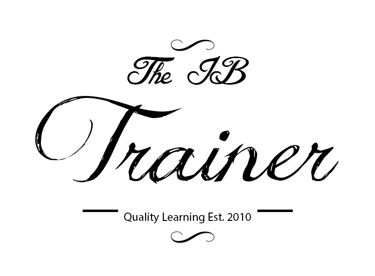Why Efficient Communication At Work Is Vital Business Theory
Discover formal and informal communication methods in business. From Boeing's PR disasters to viral museum tweets - IB Business Management made relatable.
IB BUSINESS MANAGEMENTIB BUSINESS MANAGEMENT MODULE 2 HUMAN RESOURCE MANAGEMENT
Lawrence Robert
11/8/20257 min read


When a Single Email Crashes 8.5 Million Computers
Let's imagine for a second that it's July 2024, and you're at Heathrow Airport, excited for your holiday. Suddenly, the departure boards go black. Your phone won't connect to the airport wifi. The check-in desks shut down. Thousands of flights grounded. Banks offline. Hospitals scrambling. All because of one dodgy software update from a cybersecurity firm called CrowdStrike.
One. Single. Communication. Failure.
This wan't some Sopranos episode - it actually happened, affecting 8.5 million computers worldwide. The technical problem was poor, but the communication disaster that followed? Even worse. CrowdStrike's initial response was brief, lacked empathy, and left everyone from airline passengers to hospital administrators completely in the dark.
Today we will discover that communication isn't just about sending messages - it's about sending the right messages, through the right channels, in the right way. And when it goes wrong? Well, you've just read what could happen.
IB Business Management: What Is Communication?
Before your eyes glaze over, let's get the textbook definition out of the way: Communication is the transfer of information from one party to another.
Sounds simple, right? Yet managers spend the majority of their working day doing exactly this - communicating with everyone from the intern who keeps microwaving fish in the staff kitchen to the investors who decide whether the company lives or dies.
Effective communication is absolutely essential for businesses to succeed. It enables managers and workers to understand and control what they're doing, prevents expensive mistakes, and stops that game of Chinese whispers where "we need more stock" somehow becomes "we're going into administration."
There's not just one way to communicate in business. You've got formal methods, informal methods, and about seventeen different ways each of those can go spectacularly wrong.
Formal Methods: When Business Gets Official
Formal communication is exactly what it sounds like - the official, approved, "we're-putting-this-in-writing-because-it-matters" kind of communication. It follows authorised channels, hierarchical structures, and professional standards. Think of it as the business equivalent of your school reports: structured, documented, and designed to cover everyone's backside if something goes wrong.
The formal communication toolkit:
Meetings are those official gatherings where decisions get made (or, let's be honest, where people pretend to listen whilst mentally planning their lunch). They can be face-to-face or virtual, and they use an agenda - basically a list of what you're supposed to talk about so the meeting doesn't descend into chaos. During the pandemic, Zoom meetings became so common that "you're on mute" became the most-spoken phrase in business history.
Minutes are the official written records of what happened in meetings. Someone (usually the person who drew the short straw) writes down the decisions made and actions required. These matter because when Karen from accounting claims she never agreed to that budget change, you can literally show her where she did.
Emails are the workhorse of modern business communication. Quick, documented, and you can attach files. They're brilliant... until you accidentally "Reply All" to the entire company. British supermarket giant Tesco uses email to coordinate across thousands of stores, but even they know that not everything needs to go through email - which is why they also use...
Memos (memorandums) - short, internal-only communications for announcements and reminders. Think of them as the more official cousin of a group text.
Letters are formal written communication used for important stuff like job offers, customer complaints, or resignation letters. Yes, people still use actual letters in 2025, especially when you want something to feel official and important.
Reports are detailed documents that inform, persuade, or make recommendations. They follow a structured format with an executive summary (the TL;DR - Too long, didn't read - for busy executives), introduction, main findings, and conclusion. Companies use these for everything from quarterly financial results to why the new coffee machine is actually saving the company money.
Presentations are when someone stands up (or appears on screen) and uses slides to inform or persuade an audience. Unlike meetings, they're mostly one-way communication - the presenter talks, everyone else tries not to check their phones.
Press releases are official statements sent to news media. When a company launches a new product or needs to respond to a crisis, they send out a press release. Remember when Bumble, the dating app, tried running billboards saying "Thou shalt not give up on dating and become a nun" in early 2024? The backlash was immediate - turns out telling women what to do with their bodies isn't great marketing. They had to issue a press release apology pretty sharpish and take those billboards down.
Contracts are legally binding agreements - employment contracts, supplier agreements, partnership deals. Once you've signed it, you're stuck with it, so best actually read the thing first.
Why go formal? Because it:
Clearly establishes who's in charge
Reduces mistakes and errors
Creates discipline and consistency
Improves coordination across departments
Tends to be more credible for important messages
Significantly reduces ambiguity (everyone's on the same page)
Informal Methods: Where Real Work Actually Happens
Informal communication is the unofficial, unstructured sharing of information. No formalised channels, no strict protocols - just people talking to people they've built relationships with.
And before you think "that doesn't sound professional," let me tell you about the Museum of English Rural Life in Reading. This small museum had about 10,000 Twitter followers until their programme manager Adam Koszary started pairing images of historic farm animals with absolutely hilarious captions. One photo of an Exmoor Horned Ram got retweeted over 30,000 times. The museum's following grew more than tenfold, and visitor numbers jumped the following year.
That's informal communication working brilliantly - no stuffy press releases, just authentic, engaging content that connected with people.
So what does informal communication look like in the workplace?
Gossip is sharing information or rumours, often privately. Now, your teachers probably tell you gossip is bad (and spreading unverified rumours definitely can be harmful), but gossip can also be a useful way to disseminate information quickly. The key is handling it appropriately - because workplace rumours can significantly impact perceptions and decision-making.
Small talk is casual, trivial conversation - asking about someone's weekend, chatting about the weather (this is Britain, after all - we're contractually obligated to discuss weather). It seems pointless, but it's actually how people build social relationships at work. It creates a friendly, comfortable atmosphere. What can be wrong with small talk? It can disrupt productivity if everyone spends three hours discussing last night's Soprano's episode instead of, you know, working.
Body language is the non-verbal stuff - facial expressions, gestures, posture, tone of voice. It's incredibly effective for conveying feeling or intent, but it can also be massively misinterpreted. Ever sent a text that seemed fine to you but came across as passive-aggressive to the recipient? That's because you lost all the body language cues.
IB Business Management Real-life Examples: Speaking of which - Gen Z (that's most of you reading this) has some fascinating communication preferences. Despite being digital natives who practically came out of the womb holding smartphones, research shows you actually prefer face-to-face communication over digital messaging for important workplace stuff. You've got an attention span of about 8 seconds (one second shorter than a goldfish, apparently), you prefer short, direct messages, and you're changing workplace communication with casual sign-offs like "stay litty" and "another day another slay" on professional emails. A Barclays study found that 71% of UK workers think young workers are making workplace language less formal. And here's a stat that should make businesses sit up: 68% of UK employees aged 16-24 said poor internal communication could make them quit their job.
Why embrace informal communication? Because it:
Allows employees to be flexible and responsive to changing situations
Focuses on individuals rather than rigid hierarchies
Encourages supportive workplace relationships
Creates a positive culture that encourages creativity, inclusion, and open communication
Provides opportunities for communicating across different business areas
Gives social and cultural context that helps people connect with each other
When Communication Goes Wrong: Barriers
These are called barriers to communication, or "noise" (because they block or distort the message being communicated).
Language barriers happen when the spoken or written language makes it difficult for people to understand each other. Different languages, obviously, but also accents, tones, and jargon. If someone from head office sends an email packed with corporate buzzwords like "synergise our strategic initiatives going forward," half the staff will have no clue what they're on about.
Physical barriers are tangible hurdles - physical distance (including different time zones) and poor infrastructure. Try having a productive video call when your internet keeps cutting out, or coordinating a global team when London's finishing their workday as Sydney's just waking up.
Psychological barriers are the emotional obstacles - fear, anger, resentment, bias, mistrust. Think about Boeing's 2024 disaster: after a door plug fell off one of their planes mid-flight (genuinely terrifying), CEO Dave Calhoun avoided live press briefings and released a pre-recorded statement instead. The lack of empathy and technical detail created massive psychological barriers with both the public and Boeing's own employees - people simply didn't trust what he was saying.
Technological barriers include poor internet connectivity and outdated equipment. Also, information overload - when you're drowning in emails, Slack messages, WhatsApp groups, and Teams notifications, important information can get buried in the noise.
Organisational barriers are internal obstacles like rigid hierarchical structures or lack of formal communication channels. Amazon faced massive criticism in 2024 for their "dismissive communication" during labour protests - their corporate responses felt disconnected from warehouse workers' immediate needs, creating a barrier that made employees feel unheard.
Why This Actually Matters to Your IB Business Management Course
In reality you're already experts at communication. You navigate multiple group chats, know when to leave someone on read, understand the difference between a message that needs voice notes versus one that needs a proper conversation. You instinctively know that some things need to be said face-to-face and others can be a quick text.
Business communication is essentially the same - just with higher stakes and more formal structures. Get it right, and you're Tesco with their "Every Voice Matters" employee survey, where they share results with all colleagues, celebrate successes, and turn challenges into next year's goals. Get it wrong, and you're CrowdStrike, accidentally crashing millions of computers and then fumbling the response so badly it becomes a case study in how NOT to handle a crisis.
The IB Business Management examiners love asking you to analyse communication strategies in different business contexts, suggest improvements to communication methods, or evaluate whether formal or informal communication is more appropriate in a given situation. They'll give you a case study and expect you to demonstrate that you understand why a company might choose email over meetings, or why face-to-face communication might be essential even in our digital age.
So next time you're in a group chat and things get awkward because someone misunderstood the tone of a message, or when your parents complain they never know what's going on in your life, or when a teacher emails unclear homework instructions that cause mass confusion - that's all communication theory playing out in real time.
The only difference between your group chat troubles and Boeing's PR disaster is the number of zeros on the end of the costs involved.
And maybe that's worth paying attention to.
Stay well,
IB Complete Support Courses, a new generation of affordable support materials directed at IB students seeking grades 6 or 7.
© Theibtrainer.com 2012-2025. All rights reserved.
